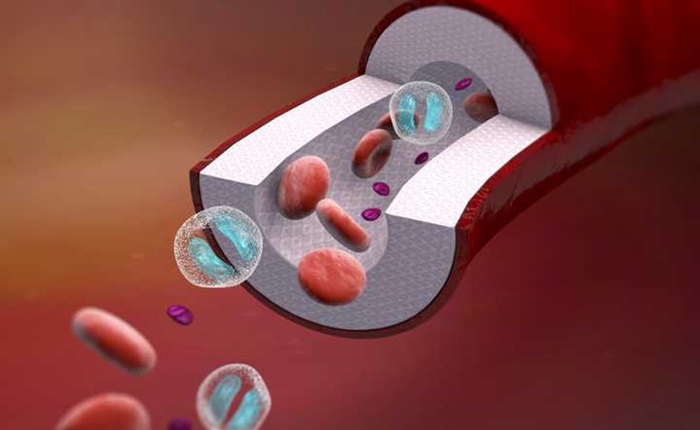Blood clots are essential for healing when you get injured, as they help stop bleeding. However, sometimes blood clots form when they aren’t needed, and this can lead to serious health problems. These unwanted clots often form in deep veins near muscles, which can be dangerous.
Dr. Luis Navarro, a specialist from the Vein Treatment Center in New York City, explains that when blood clots form in deeper veins, they can block circulation and cause significant problems. A blood clot in this area is called deep vein thrombosis (DVT). DVT can make it harder for blood to flow properly through the body, leading to painful and dangerous complications.
If a blood clot breaks loose from its original position and travels to the lungs, it turns into a pulmonary embolism. This type of clot blocks oxygen from reaching the lungs, which can damage both the lungs and other organs. In severe cases, a pulmonary embolism can be fatal, making it crucial to catch these clots early.
Some people are more likely to develop blood clots due to certain risk factors. It’s essential to stay aware of these risks and watch for the symptoms of a blood clot. Dr. Navarro emphasizes that many blood clot symptoms can be subtle or easily overlooked, so understanding what to look for is critical for getting timely treatment. Here are the 8 key warning signs of a blood clot you should never ignore.
Swelling in the Leg
One of the most common signs of a blood clot is swelling in one leg, especially if it’s accompanied by pain. The area around the clot may feel warm to the touch. If this swelling comes on suddenly and is accompanied by discomfort, it may indicate a clot.
Pain in the Leg
If you notice pain in your leg, especially in the calf or thigh, it could be a sign of deep vein thrombosis (DVT). The pain may start gradually and worsen as time goes on. It’s important to pay attention to any unexplained discomfort, especially if it’s localized to one leg.
Red or Discolored Skin
Skin around the clot may appear red or have a bluish tint. If you notice unusual discoloration in the leg, particularly in an area where you feel pain or swelling, it’s important to seek medical attention.
Shortness of Breath
If a blood clot reaches your lungs and causes a pulmonary embolism, you might experience shortness of breath. This could happen suddenly and be accompanied by chest pain. Difficulty breathing or feeling winded even when resting is a serious symptom that requires immediate medical attention.
Chest Pain
Chest pain, especially if it is sharp or gets worse with deep breathing, is a major red flag for a pulmonary embolism. If the pain feels like a heavy pressure or is accompanied by shortness of breath, it may indicate a blood clot in the lungs.
Coughing Up Blood
Coughing up blood is another serious symptom of a pulmonary embolism. If you start coughing up blood or have a persistent, unexplained cough, this could be a sign that a blood clot has moved to your lungs.
Swollen or Tender Skin
In addition to pain and swelling, the skin around the clot may also feel tender or swollen. The area may look swollen and feel sore to the touch. If you notice tenderness, especially in combination with other symptoms, you should seek medical help immediately.
Fatigue or Weakness
Unexplained fatigue or weakness is often a sign of a blood clot affecting the heart or lungs. If you’re feeling unusually tired, especially when performing normal activities, it’s important to pay attention to any other symptoms like pain or swelling.
Recognizing the signs of a blood clot early can make a significant difference in your treatment and recovery. If you experience any of these symptoms, it’s important to seek medical attention right away. Blood clots can be life-threatening, but with quick intervention, the risks can be minimized. Always listen to your body and don’t ignore symptoms that might point to a blood clot.
Related topics:
- Moving Blood Clots: Causes, Types, Treatment & Prevention
- Understanding Blood Clots: Detection, Diagnosis & Treatment
- Blood Clots in Legs: Symptoms and Risks


